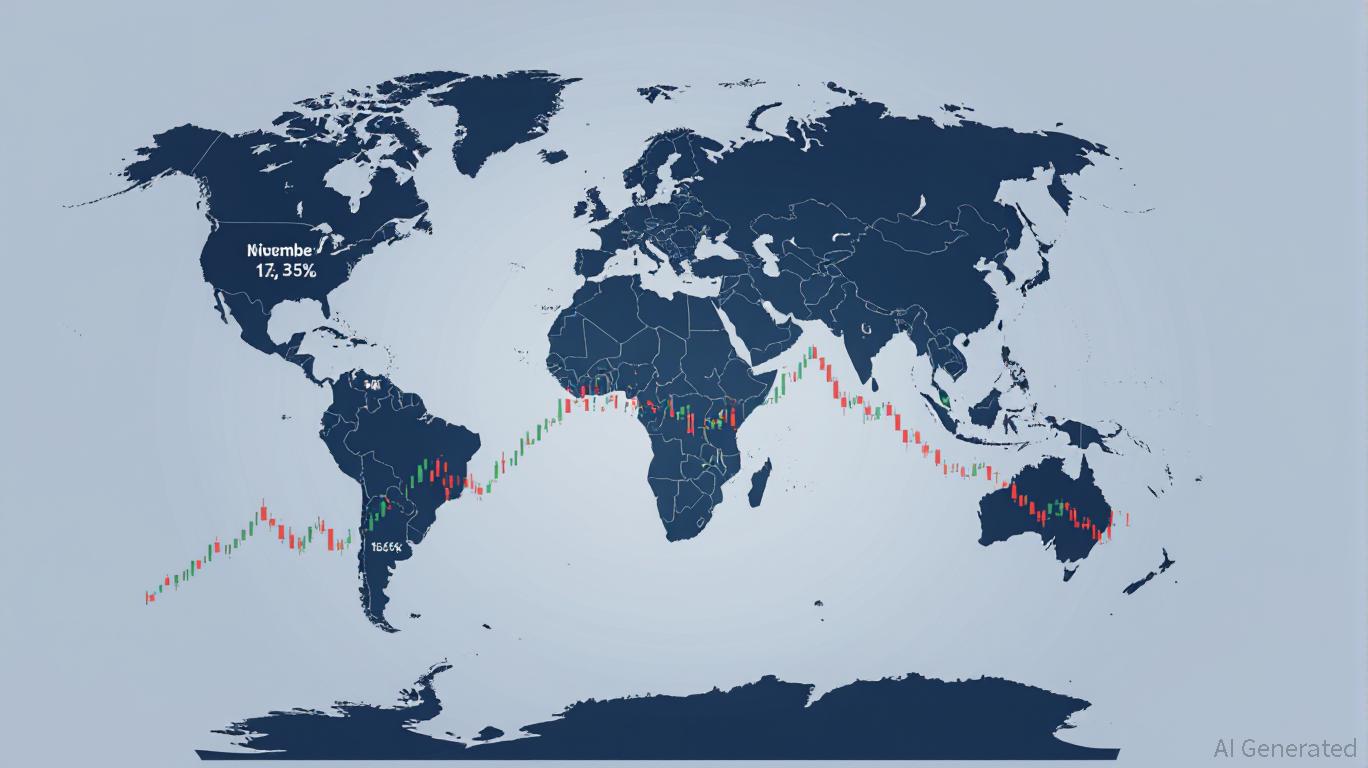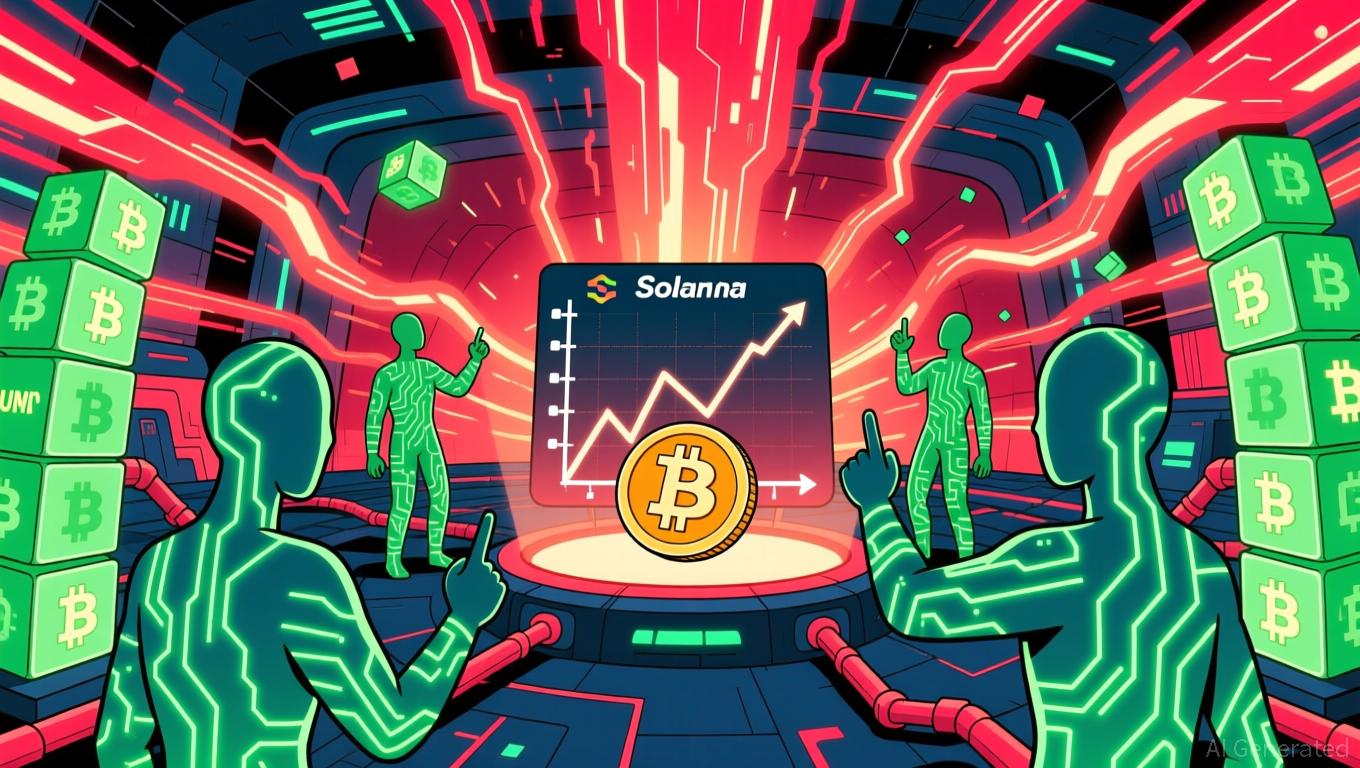The Driving Force Behind Bitcoin’s Latest Steep Drop: Macro-Economic Uncertainty Versus Investor Mood in Cryptocurrency Price Fluctuations
- Bitcoin's November 2025 plunge below $100,000 triggered $869M in U.S. ETF outflows, the second-largest single-day withdrawal. - Macroeconomic risks, including U.S. inflation and UK fiscal shifts, heightened global uncertainty, undermining Bitcoin's perceived safe-haven status. - ETF outflows and fragile retail investor confidence accelerated the selloff, with BlackRock’s IBIT and Fidelity’s FBTC losing $256M and $120M respectively. - The interplay of macro risks and market sentiment created a "perfect st
When Bitcoin dropped below $100,000 in November 2025, it signaled a major turning point for the cryptocurrency sector,
Macroeconomic Factors: Inflation, Fiscal Policy, and Central Bank Guidance
The selloff in November 2025 happened alongside persistent inflation worries in the U.S. and an unexpected fiscal shift in the UK. Even after a 43-day U.S. government shutdown ended,
Although Bitcoin is often seen as a safeguard against economic instability, it appeared exposed to these developments. Anticipated changes in interest rates—especially in the U.S. and UK—created ambiguity around future borrowing costs, dampening appetite for riskier assets. As one market expert put it, "Bitcoin’s reputation as a safe haven diminishes when investors focus on liquidity and fiscal reliability rather than speculative investments"
Investor Sentiment: ETF Movements and Trading Behavior
While broader economic risks set the context, shifts in investor sentiment—reflected in ETF flows and institutional actions—served as the immediate trigger for Bitcoin’s slide. On November 13, 2025, spot Bitcoin ETFs
The downturn was made worse by shaky investor confidence. Although the U.S. government shutdown was over,
Retail trading patterns further highlighted the market’s vulnerability. The Canary XRP ETF (XRPC)
Comparative Perspective: Macroeconomic Risks Versus Market Mood
The relationship between macroeconomic threats and investor sentiment paints a complex picture. While inflation and fiscal unpredictability fostered a risk-averse climate, the rapid and deep decline in Bitcoin’s value was intensified by feedback loops in investor actions. For instance,
Although academic research is limited in the cited sources, market data allows for some conclusions. The HBAR example demonstrates that while ETF inflows can temporarily absorb selling, they are insufficient to reverse larger trends when macroeconomic forces are dominant
Future Outlook: Navigating Macro and Sentiment Drivers
The events of November 2025 highlight the need to pay close attention to both economic fundamentals and investor psychology. While institutional withdrawals and retail attitudes directly influenced the selloff, the underlying environment—characterized by inflation uncertainty and fiscal experimentation—set the stage for increased volatility.
For those investing in crypto, the takeaway is straightforward: Spreading risk and using hedges against macroeconomic shocks (such as inflation-protected assets or diversified ETFs) may be essential for weathering future downturns. At the same time, the endurance of new crypto offerings like the XRPC ETF indicates that innovation could help counterbalance short-term market swings.

Disclaimer: The content of this article solely reflects the author's opinion and does not represent the platform in any capacity. This article is not intended to serve as a reference for making investment decisions.
You may also like
Uniswap News Today: Uniswap's CCA Makes Token Launches More Accessible, Reducing Whale Influence
- Uniswap v4 launches Continuous Clearing Auctions (CCA), a permissionless protocol for transparent, community-driven token launches with Aztec. - CCA divides token sales into blocks settled at market-clearing prices, reducing volatility and sniping while enabling equitable distribution. - The protocol automatically seeds liquidity post-auction and supports privacy via Aztec's ZK Passport, marking a DeFi innovation in fair token distribution. - CCA aims to standardize on-chain price discovery, countering w

Why MUTM’s Approach to DeFi Might Establish New Standards for Liquidity
- Mutuum Finance (MUTM) nears 99% Phase 6 presale allocation ahead of Q4 2025 V1 lending protocol launch on Sepolia testnet. - Project has raised $18.6M through strong retail and institutional participation, positioning it as a rising DeFi contender focused on liquidity and execution speed. - V1 will introduce ETH/USDT lending, mtTokens, and a Liquidator Bot, marking transition from theory to practical DeFi implementation. - Market attention centers on MUTM's $0.05+ token price, transparent roadmap, and Ph

Solana News Update: Solana's DeFi Expansion Poses a Threat to Ethereum's Leading Position as Buybacks Drive Further Development
- Solana's Pump.fun accelerates growth via $173.7M PUMP token buybacks, reducing supply by 10.928%. - Solana's DEX volumes ($5.11B daily) now surpass Ethereum and BNB Chain, driven by 21.5 development activity score. - Ethereum's 67.65% DeFi TVL lead faces pressure from Solana (8.9%) and Tron (25.78% stablecoin share). - Institutional inflows and macroeconomic factors determine Solana's $180 price breakout potential (29% probability). - Pump.fun's sustainability hinges on maintaining user base amid Solana'

Tether’s Approach to Gold: Integrating Blockchain Technology with Precious Metals to Transform Trust
- Tether , issuer of the world's largest stablecoin, has accumulated $8.7B in Swiss gold reserves by 2025, becoming a top private gold holder. - The company restructured reserves to prioritize gold, aligning with central bank trends and tokenizing $1.5B in bullion via XAU₮. - Tether hired HSBC executives and launched a $200M gold treasury venture, vertically integrating into mining and royalty firms. - Its strategy reflects macroeconomic shifts toward gold as an inflation hedge, but faces scrutiny over tra
